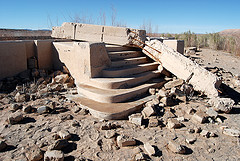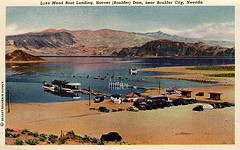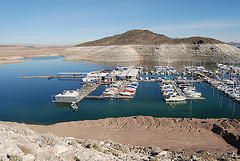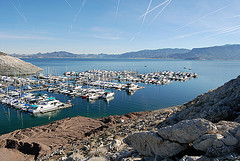
As the Lake continues to drop dramatically, all sorts of artifacts that have long been underwater are popping up in the mud and dirt of where the Lake once was.
One such place is St. Thomas. Once a small Mormon farming community, St. Thomas was established in 1865. It was near where the Muddy River flowed into the mighty Colorado. Many of the Mormon families left St. Thomas in 1871 when a re-alignment of the state line placed St. Thomas in Nevada instead of Utah. Some families stayed and others moved there. St. Thomas thrived and became a well-known community on the edge of the Moapa Valley.
The building of Boulder Dam, however, doomed the community. In anticipation of Lake Mead rising behind the Dam, the federal government bought out the homeowners in St. Thomas beginning in the mid-1930s. Some families tore down their homesteads that had been in their family for generations. Others walked away with what they could carry leaving behind their possessions that were too large or burdensome to take.
On June 11th, 1938 the last resident, Hugh Lord, rowed away from St. Thomas forever. Lake Mead soon engulfed and covered over St. Thomas. The town became but a memory that old-timers talked about. When a drought in the mid-1960s caused the Lake to drop, some of St. Thomas briefly reappeared. But the drought soon ended, the snows returned to the Rockies and St. Thomas soon slipped back under the blue water of the Lake.
Today, the Lake has dropped so dramatically that St. Thomas has resurfaced completely. Guided tours can be arranged through the National Park Service for those interested in exploring this wonderful piece of Southern Nevada history.
One of these days, the snows will return to the Rockies and the drought will end and the Lake will once again reclaim this fascinating piece of history.
Special thanks to RoadsidePictures for letting us use that photo.













